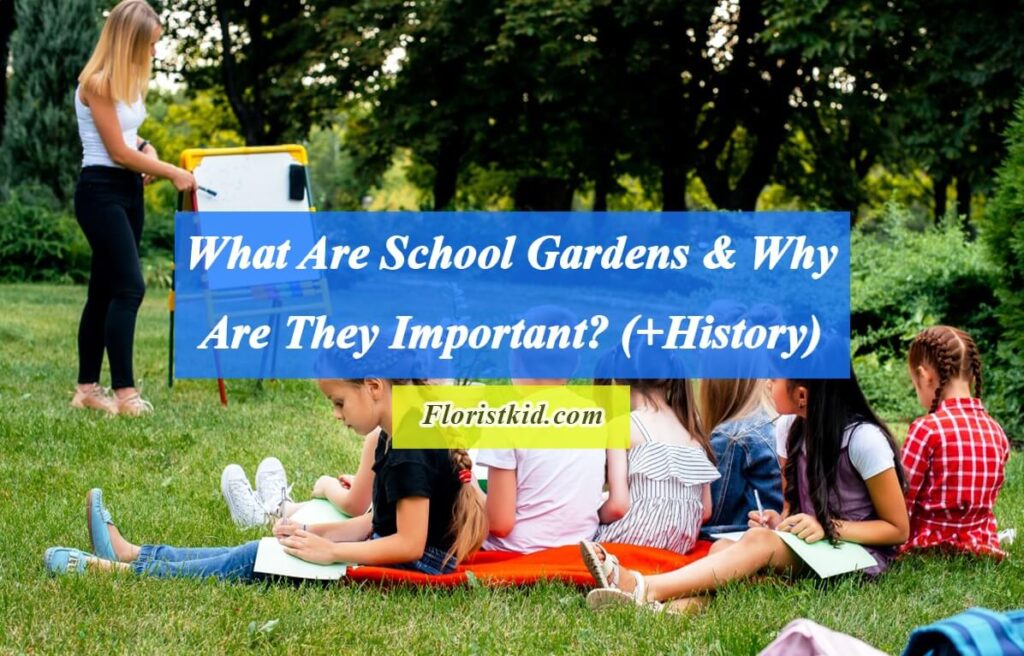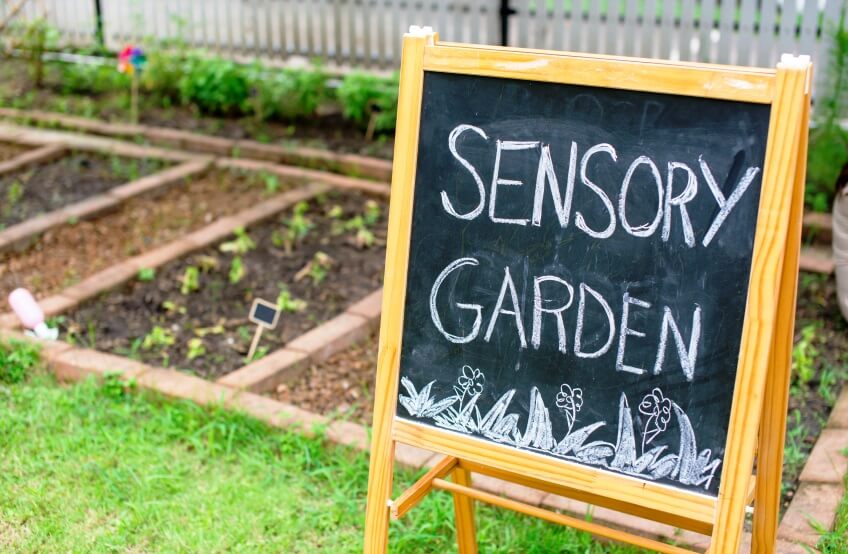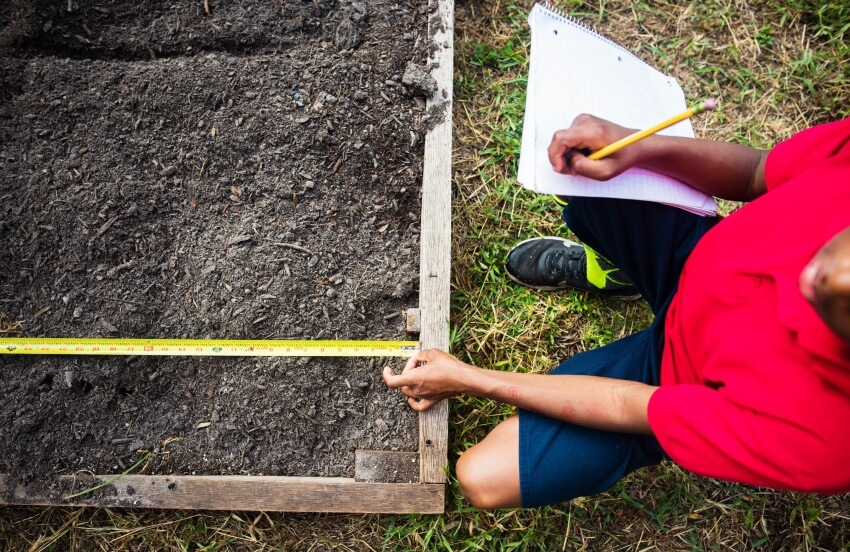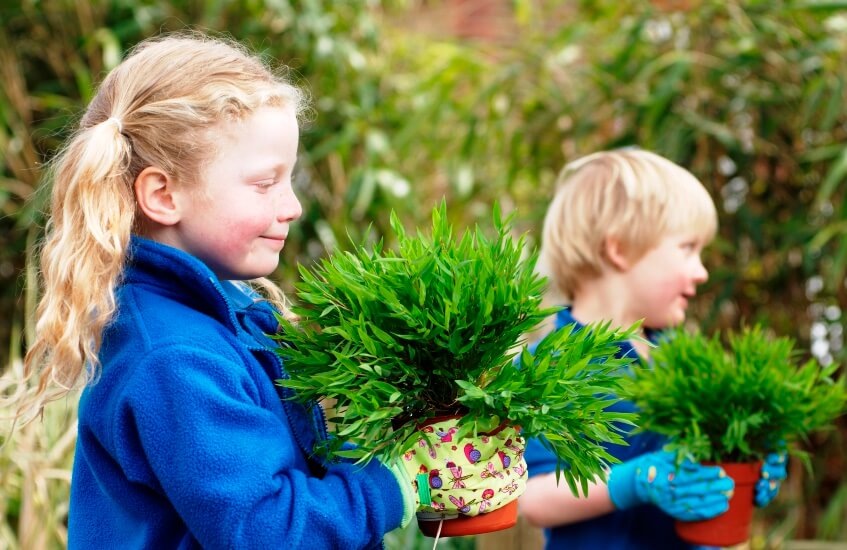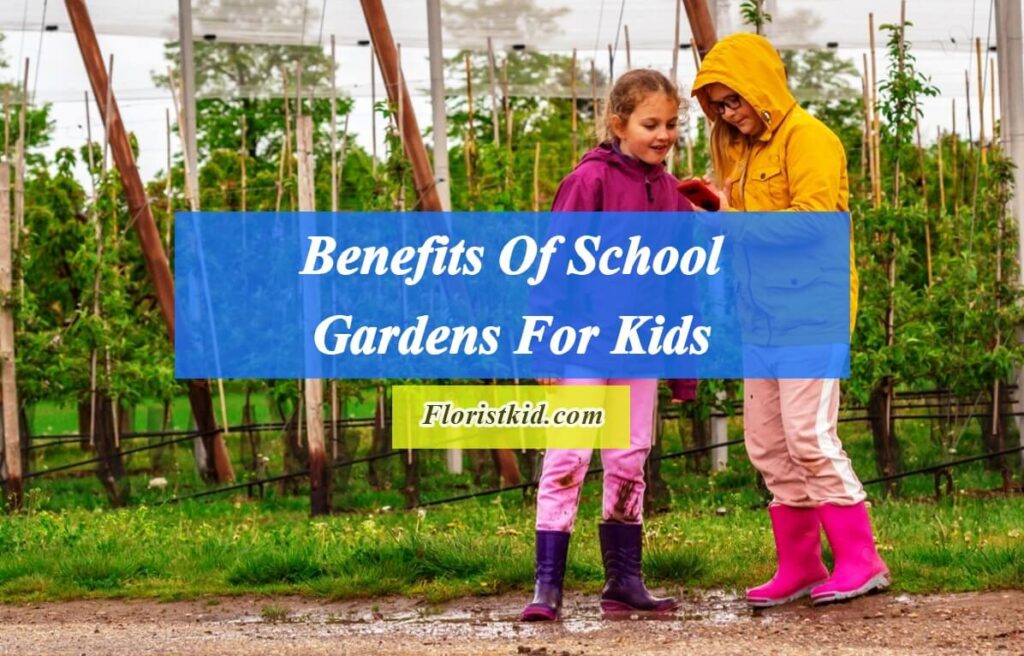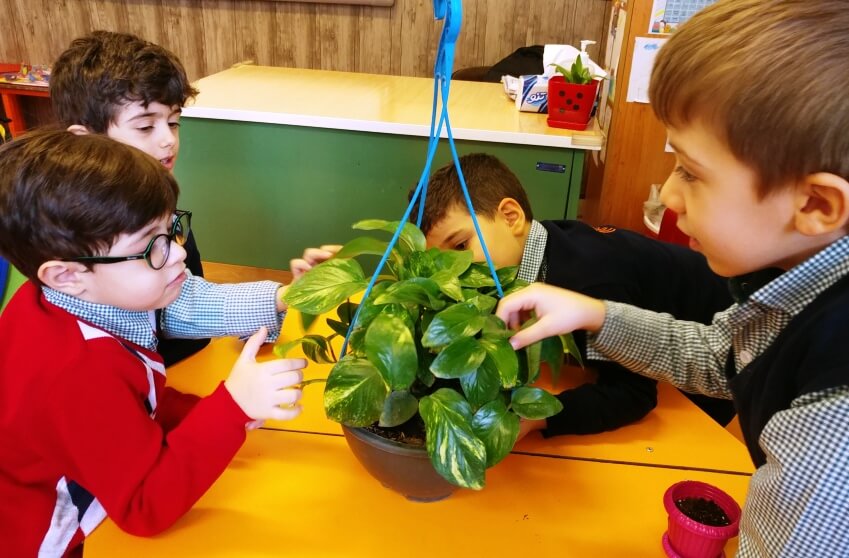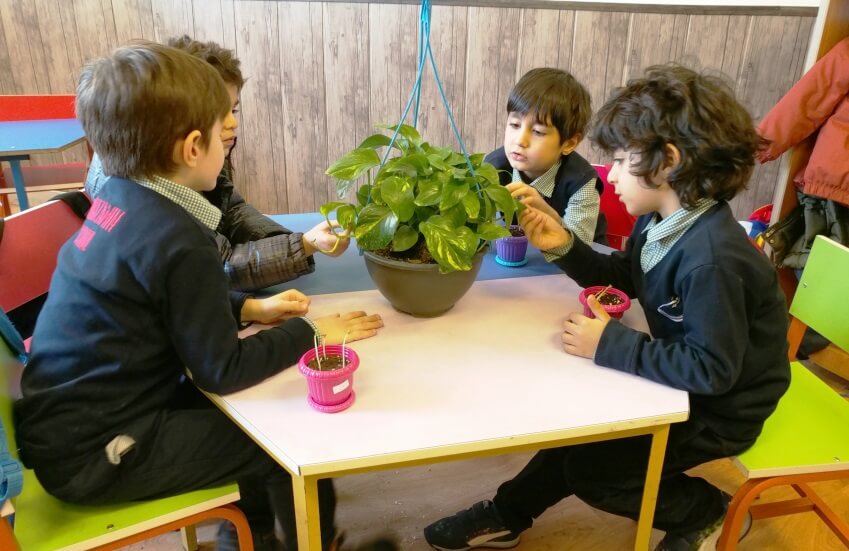The advantages of school gardens were previously covered in the <<Benefits of school gardens>> article. This article will discuss the importance and background of school gardens.
If you are interested in this topic, you can also read
<<What is A Forest School>> and <<What is A Sudbury School>> articles.
What is a school garden?
A school garden is an outdoor classroom haven that attracts a wide variety of species, each of which is a wonderful chance to educate kids about the intricate and fascinating ecosystem that we are all a part of it.
In school gardens, the schoolyard serves as a classroom, reconnecting students with the natural world and the true source of their food while teaching them valuable gardening and agriculture concepts and skills that integrate with several subjects. These subjects include math, science, art, health, physical education, social studies, and several educational goals, including personal and social responsibility.
Even at schools with limited resources, school gardens offer kids an on-site opportunity for “field trips.” Small school gardens could consist of planter boxes on a rooftop or raised boxes on an asphalt play area. Sometimes, a school may have enough room to convert an empty playing field or parking lot into a mini-farm with hens, possibly goats or sheep.
School gardens may be created to teach kids about food and nutrition by growing edible crops, or they may be used to teach about the local environment by growing native plants. But all school gardens have one thing in common; they are a wonderful approach for moving from a typical classroom to an outside, experiential learning experience that emphasizes student engagement and critical thinking.
History of school gardens
School gardens are not exactly a novel idea. Gardens as educational resources have been the subject of several studies and publications that trace their development from the eighteenth century in Europe to the present on both sides of the Atlantic.
From Friedrich Froebel (1782–1852), the founder of the kindergarten education movement, to Rousseau (1712–1771), many notable philosophers have emphasized direct sensory experience as the cornerstone of education.
As a means of carrying out a rule that required gardens in schools in Austria, Erasmus Schwab published “The School Garden: Being a Practical Contribution to the Subject of Education” in 1879. (Desmond, Grieshop, and Subramaniam 2003).
In a report for the Food and Agriculture Organization of the United Nations titled “Revisiting Garden-Based Learning in Basic Education,” Daniel Desmond, James Grieshop, and Aarti Subramaniam of the University of California at Davis summarized the vast amount of research about the historical development and current results of the school garden movement worldwide (2004).
They listed three periods when school gardens were particularly popular in the United States: 1900–1930, which coincided with Progressive reforms and the start of the First World War; 1960–1970, which was marked by counter–cultural and environmental movements; and 1990–2000, a time when environmental education and educational reform regained popularity.
Another peak in interest is happening now, given the current focus on climate change, attempts to reconnect kids with nature, and increased understanding of sustainability issues and green behaviors.
Why school gardens?
Reconnecting children with nature
The current generation of school-age children is disconnected from food production, agriculture, and in many cases, the natural world. Given that they have no link to their surroundings, we are aware that we cannot expect kids to be concerned about nearby or even faraway environmental issues. As parents, guardians, and citizens, we should search for solutions to this complex issue.
A school garden can help to start the process of solving these difficult issues. Growing food or creating native habitat gardens can help children feel more connected with the natural world, can help them develop a concern for their local ecology and even more severe environmental problems.
Academic accomplishments
What public schools have versus what students really need differs significantly. There are various methods to fill this gap, but most involve contributing time or money to schools. School gardens are a great and affordable way to enhance a school site, requiring a little time and money.
Passive learning frequently occurs during traditional classroom activities, such as reading aloud to the class and paying attention to the teacher. But, in an outdoor garden classroom, students engage in active, hands-on learning activities that bring abstract concepts to life.
School garden programs use common gardening chores like planting, caring for plants, and harvesting to demonstrate cultivation. Participants in the learning process include plants, insects, birds, and the weather. Children are consequently more interested, focused, and eager to study in such situations.
Building social skills
Gardens serve as a foundation for fostering community. A garden program enriches a school on many different levels and acts as a mild uprising and remedy for the depressing note of resource depletion.
School gardens foster critical interpersonal skills that last a lifetime and provide knowledge of accountability, leadership, and teamwork. Gardens also promote a feeling of community by bringing together parents, educators and students.
A school garden is an excellent approach for parents who are unclear about how to get involved in their children’s education, especially for those who have just immigrated to a new country like United states and are eager to impart their knowledge and unique agricultural practices.
Healthy lifestyle practices
A school garden program substantially covers the massive gap created by the elimination of home economics programs from our schools. A school garden can serve as a somewhat tangible example of the essential life lessons from that curriculum, such as resourcefulness and thriftiness, or how to prepare meals and shop with good nutrition in mind, or how to sit down and share a meal with others, or even basic civility and table manners.
According to research, kids are much more likely to consume vegetables that they have grown. Students benefit from the increased nutritional benefits of products grown on school property since schools frequently include garden harvests in their lunch programs.
Nutritional education is a common component of school gardens and has been demonstrated to enhance attitudes toward vegetables in general. Kids who have attended such school gardens are more likely to request family members purchase veggies and consume them, even as snacks.
How does learning occur in garden schools?
In the garden, learning occurs via hands-on experience and exploration. For instance, by letting water flow down a sand slope, kids may learn how landforms are formed, or another example can be crops that are permitted to self-reseed; pumpkins left out in the elements provide kids a chance to watch rot, decay, and ultimately redemption as the next round of seeds germinate.
School gardens serve as outdoor classrooms that teach a trial-and-error method of learning; students use their hands to engage their minds in practical problem-solving. A simple definition of garden-based learning is an instructional technique that uses a garden as a teaching resource.
Yet, this term does not adequately convey the variety of strategies used in an outdoor classroom to increase student comprehension. Due to a school’s obligation to teach according to the norms of education, traditional classrooms are frequently highly structured and disciplined. On the other hand, school gardens serve as outdoor classrooms that teach the curriculum and also offer many possibilities to go beyond the requirements because they are dynamic learning environments.
A young child’s perspective of the world is formed by various firsthand experiences, including caring for a seedling from germination to maturity, watching hummingbirds pollinate salvia, smelling thyme, weeding, and many other activities.
The school garden amplifies and improves topics addressed in the standard classroom by promoting active learning and sensory stimulation. Gardens also teach students that learning may occur anywhere, but notably outside of the traditional classroom.
References:
- Bucklin-Sporer, A., & Pringle, R. (2010, June 30). How to Grow a School Garden: A Complete Guide for Parents and Teachers.
- https://sustainablefoodcenter.org/latest/gardening/five-reasons-to-start-a-school-garden
- https://www.pennington.com/all-products/fertilizer/resources/school-gardens-changing-lives-and-communities

